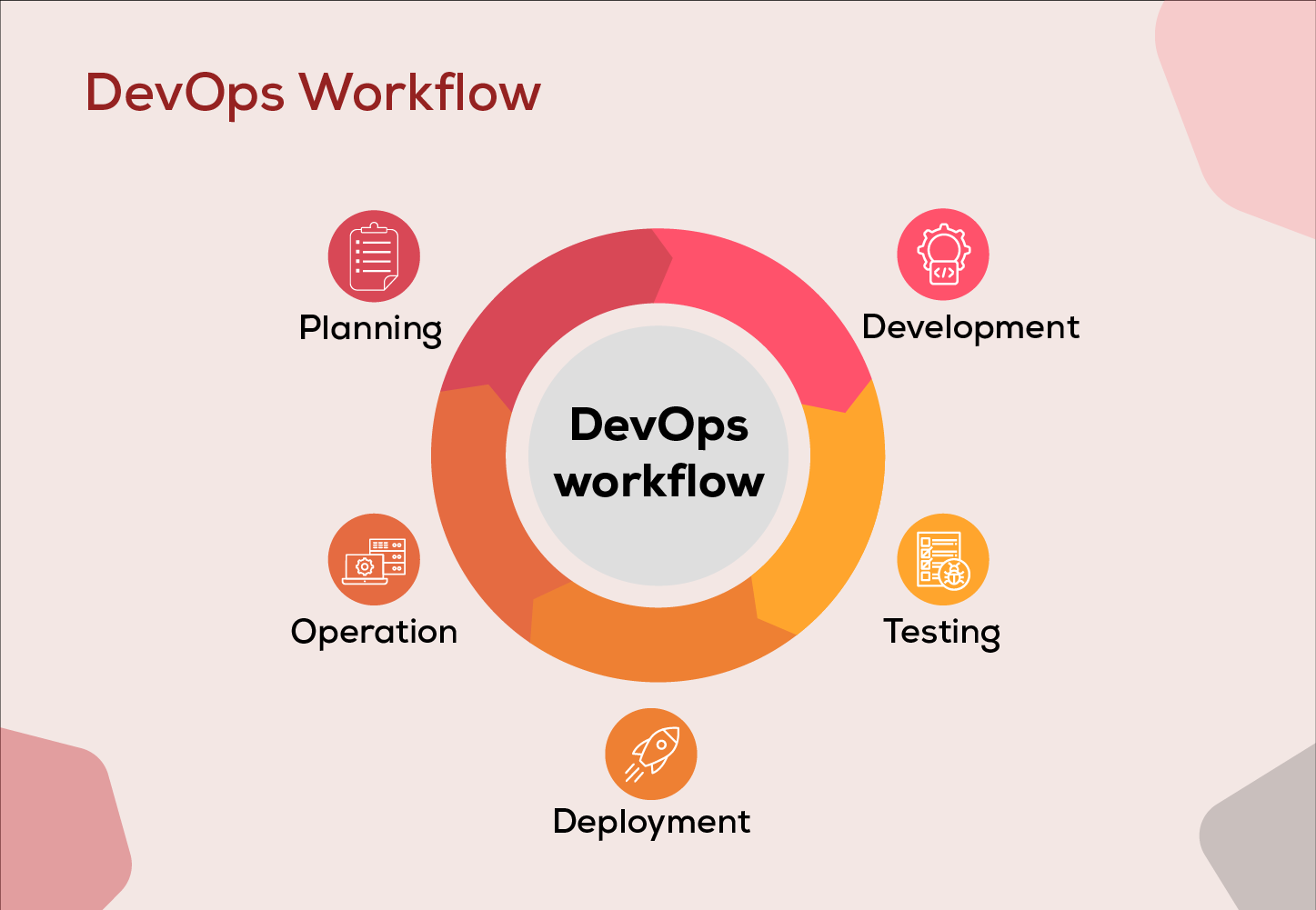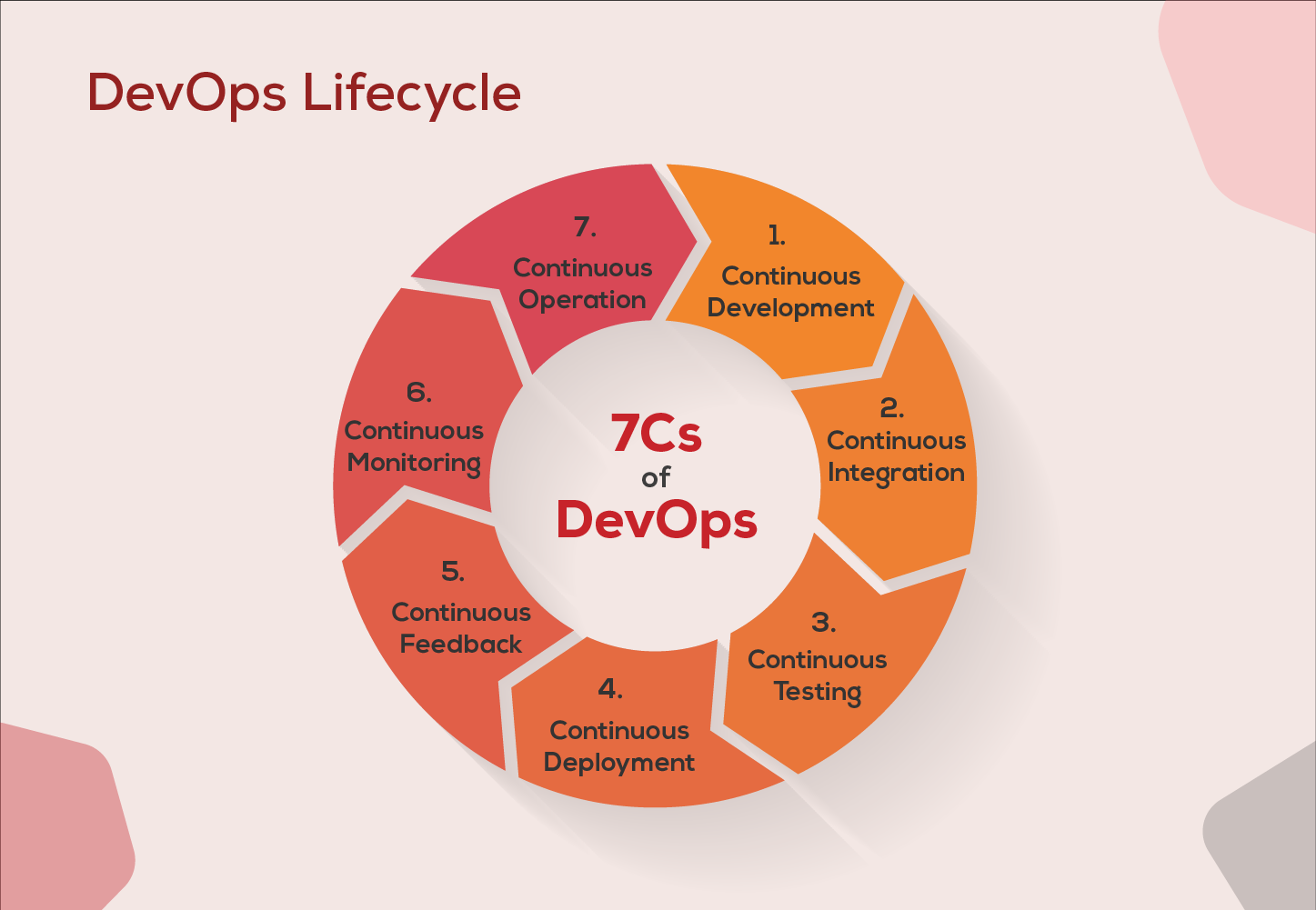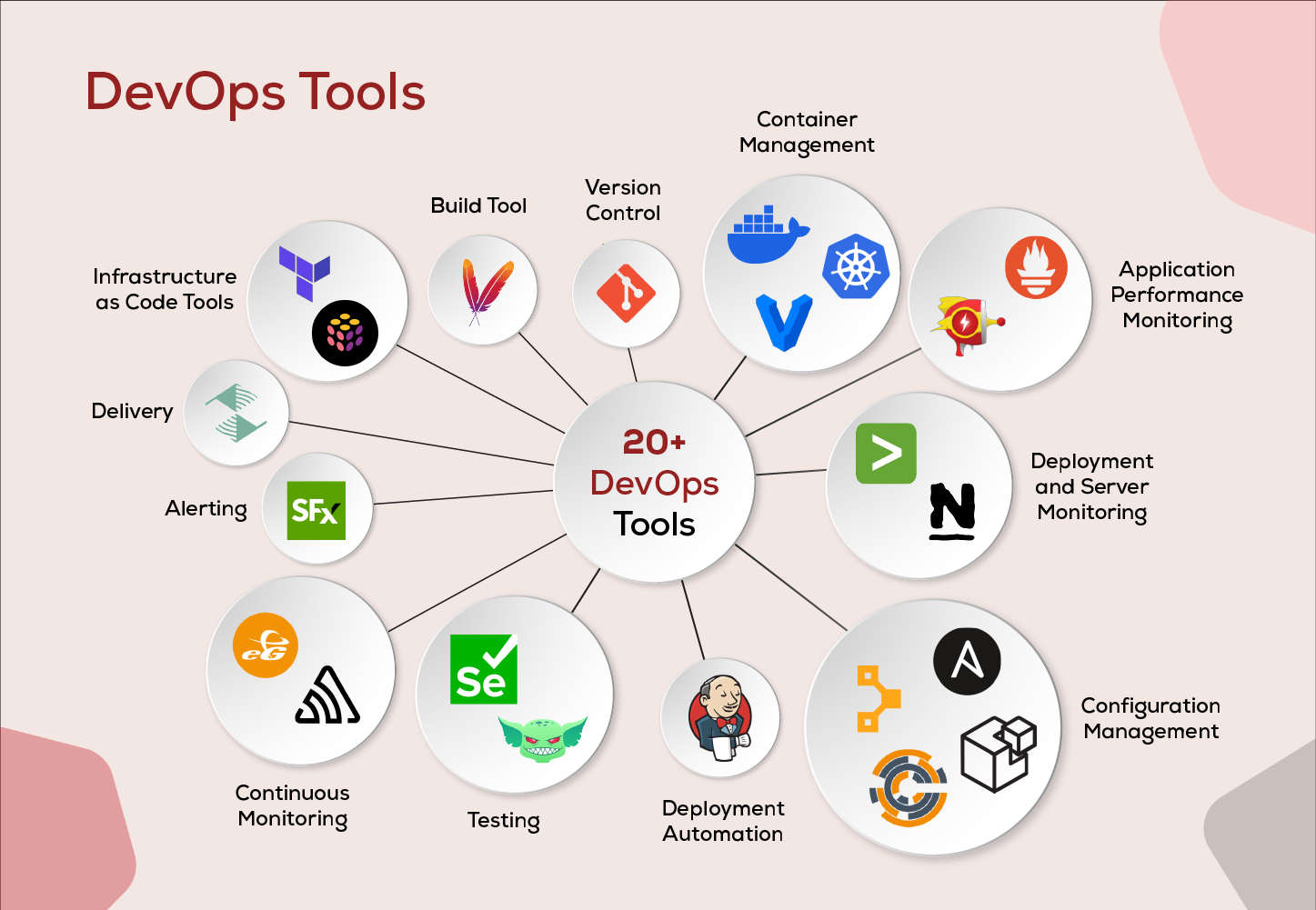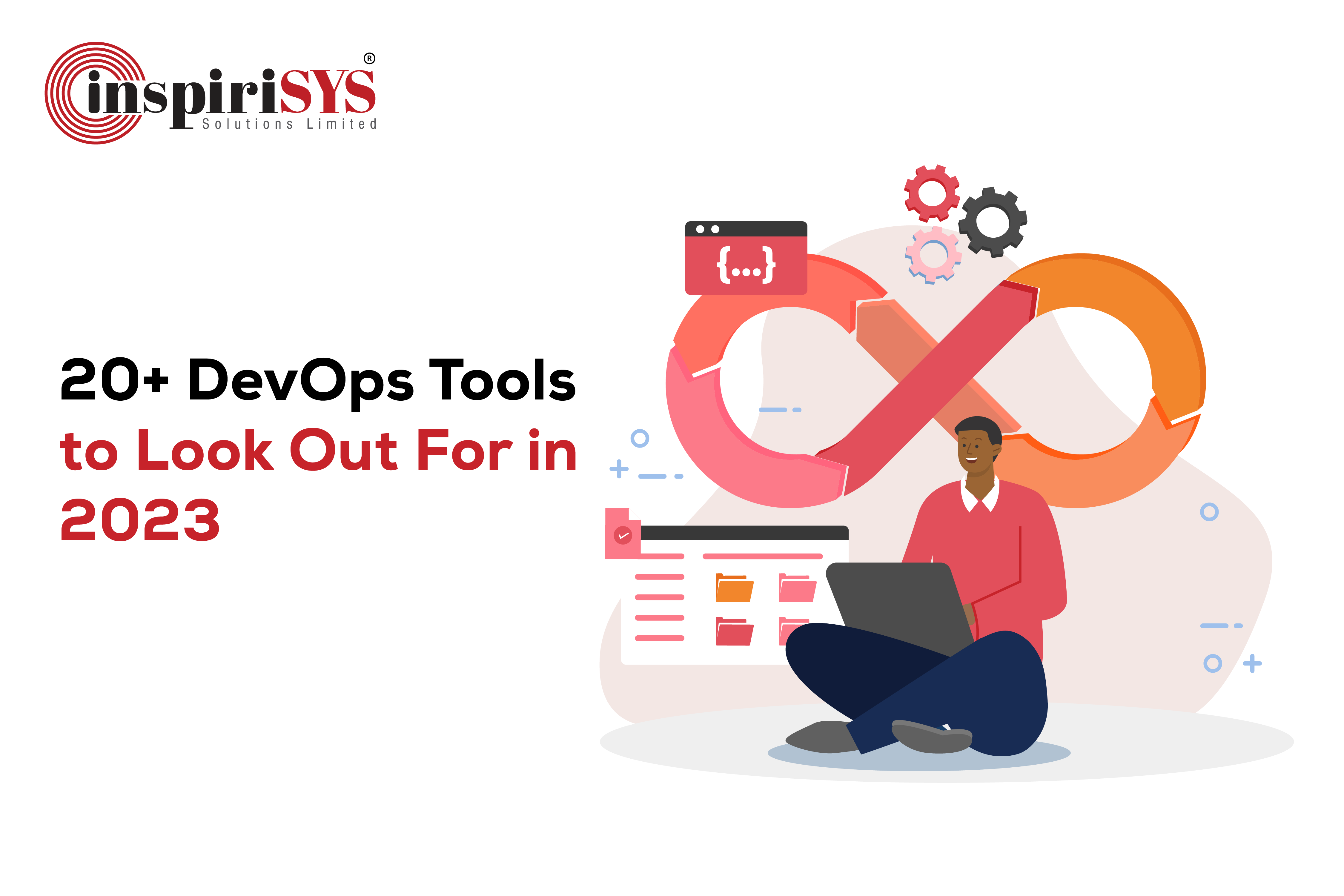DevOps involves a set of tools that integrate IT teams and software development, with the primary focus being the convergence of these functions. It traces the approval of iterative software development, maintenance and automation. DevOps heavily depends on various components like testing, infrastructure configuration and deployment. The utilization of DevOps tools becomes crucial to attaining optimal effectiveness and efficiency.
According to the Atlassian DevOps trend survey in 2020, it is noted that 99% of respondents had a positive impact towards DevOps.
Let's now delve into the objectives of DevOps:
- Establishing continuous delivery
- Enabling continuous integration
- Achieving continuous deployment
- Improving communication processes
- Enhancing the flow of ideas
How does DevOps work?
During the entire software cycle, the development team and operation team work simultaneously.
Let's dive into the DevOps process.

Planning
Planning is the first step in software development. The DevOps team will lay out the timeline and goals of the project, while also selecting tools based on the project requirement.
Development
In the second phase, the DevOps team performs tasks like integration, reviewing and coding. While maintaining stability, they are committed to producing superior quality products. Additionally, they harness DevOps tools like Chef, Ansible, and Terraform among others.
Testing
Usually, testing is done to identify the errors or bugs within the system. Clearing these bugs can also heighten the customer experience.
Deployment
In this phase, the software is deployed into a dependable environment. Given that this step closely monitors operations, it is deemed inherently crucial. The deployment process occurs continuously during this phase. Several tools, such as Bamboo, CircleCI, etc., are employed for deployment.
Operation
Some of the phases that operation covers are monitoring, maintaining and logging. While strengthening, the security DevOps team focuses on establishing reliability, stability and high availability.
Benefits of DevOps
The core benefit of DevOps is to build customer satisfaction and reach people faster. DevOps promotes faster and finer delivery of business. Further, it provides greater scalability, availability and reduces human intervention. It also has more stable operating environments. Security plays a significant role in enforcing automation. Additionally, it facilitates the organization to carry out quality software. To provide an optimal service to the customer, defect correction stands purely important.
What is DevOps Lifecycle?
There are 7 phases in the DevOps lifecycle.

1. Continuous Development
Continuous Development is an evolutionary phase. Here, the objectives are delivered through the application. The primary focus of Continuous Development lies in project planning and coding. The process of coding starts, once the project objectives are defined. While the planning process doesn't demand DevOps tools, coding necessitates specific tools.
2. Continuous Integration
Continuous Integration stands as the most pivotal phase in the DevOps life cycle where features are expanded and seamlessly integrated into the existing code. This fosters an environment of continuous development. It involves the process of unit testing, integration testing, code review and packaging forming a diverse process that prepares code for deployment. This approach enables various stages of the software development lifecycle. To achieve Continuous Integration, tools like Bamboo, Jenkin, TeamCity and CircleCl effectively enhance workflow productivity.
3. Continuous Testing
Continuous testing depends on the utilization of automation tools. The developer’s software is subjected to ongoing bug testing. For the testing process, tools like TestNG, JUnit and Selenium are used. If a bug is identified during the Continuous testing phase, the code is cycled back to the integration phase for further refinement.
4. Continuous Deployment
This phase is considered as the most important phase in the DevOps lifecycle. Here, the code is mainly deployed in the production server without human intervention. It is necessary to check whether the code is used accurately on all the servers. This is where configuration management tools step in playing an important role in executing tasks promptly. Some of the well-known tools used in the Continuous Deployment phase are SaltStack, Chef, Puppet and Ansible. To handle the scalability, tools like Docker and Vagrant are utilised.
5. Continuous Feedback
In this phase, the codes are analysed and improvised. Regular follow-up on customer feedback and reviewing codes are essential. One of the key components is the continuity process as it avoids unnecessary steps. This helps to find what the issue is and generate better versions. Further, it helps to remove bugs in the code making it easy for the customers to use.
6. Continuous Monitoring
To detect system errors, the features and functionalities are continuously monitored. Generally, the monitoring incorporates operational capabilities. The continuous monitoring phase supports the security of the service. Some of the popular tools used in this phase are ELK Stack, Nagios and Splunk.
7. Continuous Operation
This is the last phase in the DevOps lifecycle. This step spots errors, releases processes and creates a better software version. Here, tools like Docker and Kubernetes are used to reduce downtime.
Check out our blog to know more about the DevOps lifecycle.
List of DevOps Tools
Having understood the contexts of DevOps and its working process, let's unwrap the DevOps tools that help to automate the software development process. DevOps enables a range of tools, and the list is as follows.

1. Tool for Version Control
Version control software is better known as source control. The version control tool helps us manage the changes made in a software’s code.
Git
This is one of the most common tools used for automated version control. It is framed to manage minor to major projects. Additionally, it plays an important role in coordination, collaboration, integration and communication between the developers and the operations team. Git allows developers to monitor and track the changes made in the code. This tool works well with application development and cloud infrastructure. Some of its key features include scalability, security, consistency and support of the pull requests.
2. Tools for Container Management
A container is software, packed into a transportable environment. This tool allows the developers to package, and monitor the distributed applications.
Docker
This tool permits building, shipping, deployment and distribution of applications on numerous systems. Furthermore, it helps to assemble the apps from various components. Docker also enhances security, portability and test - time. It helps to make the development process faster. Additionally, it increases productivity, helps to change container images, and configures the system faster.
Kubernetes
Kubernetes, also known as K8s, is an automated orchestration platform. It automates the deployment, scaling, networking and availability of applications and also facilitates both automation and declarative configuration. Some of its key features are batch execution, storage orchestration, self-healing capabilities and load balancing.
Vagrant
This tool streamlines workflow management within a unified framework. It seamlessly integrates with infrastructure providers such as AWS, VirtualBox, and VMware. Vagrant empowers the developers to create light weight and portable development environments.
3. Tools for Application Performance Monitoring
To manage the performance of an application, monitoring and collecting data are necessary. The monitoring tool helps us monitor application performance.
Raygun
Raygun is a monitoring tool that helps developers experience software applications. It is designed in such a way that it can distinguish, determine and fix application issues such as errors and crashes. This can integrate up to 43 tools that cover scripting languages like JavaScript, Python, PHP and platforms like GitHub, Slack, Jira and many more.
Prometheus
Prometheus is a monitoring tool used to support a wide range of monitoring processes. This tool can support multiple modes of graphing and supports a dashboard. Additionally, this tool can gather and store its metric data as time series data.
4. Tools for Deployment and Server Monitoring
The deployment tools help in updating the code on a particular server.
Splunk
Splunk is a useful tool that provides operational intelligence to teams. Security and productivity can be achieved through Splunk. Also, this tool makes the machine data valuable and usable to everyone.
Nagios
This tool is considered popular in the DevOps landscape. With the help of a network and server, Nagios can detect errors and rectify them. Operating as an open-source network it can accommodate both small networks and large networks. A robust array of features empowers the tool to effectively enable IT infrastructure.
5. Tools for Configuration Management
The configuration management tool is used to reduce manual effort. It also helps to prioritize actions, automate system identification and identify poor performances.
Puppet
This is one of the most popular open-source tools used in DevOps. The Puppet tool eliminates manual work for developers, aiding in managing server configurations automatically. Additionally, it oversees the entire environment, systems, application deployment, and infrastructure. In precise, this tool employs declarative language to depict the resource state
Ansible
It is an open-source DevOps tool. Ansible is used for automation and deployment, making infrastructure management easier. Further, it can also be used to accelerate productivity and automate software installation. It removes iterated tasks, manages compound deployments, automates application deployment and avoids complexity. It also has a range of tools that covers container orchestrations, security automation and continuous delivery system.
CHEF
To attain scale, speed, and consistency, this tool is predominantly utilized. CHEF is a configuration management tool. This technology helps in reducing repeated tasks and manual work. Additionally, it covers features like multiple cloud environments, and high availability and employs Ruby language.
SaltStack
This Configuration management tool is similar to Ansible. It involves several tools to mechanize the workflow. SaltStack removes messy data changes and in addition, it tracks down all the details of web requests.
6. Tools for Deployment Automation
These tools help us to remove the burden of doing repetitive tasks.
Jenkins
It is one of the widespread continuous integration tools. A large number of plugins are used in Jenkins and is thus considered an extensible tool. To aid the building, nearly 400 plugins are used. This releases a set of tools that can be employed for the Delivery pipeline. It also supports collaboration between development and operation teams. Further, it advocates continuous delivery and continuous integration. Thus, it requires a little maintenance and has tools for the update process.
7. Tools for Testing
Testing is important for catching bugs at an early stage. Selenium and Gremlin are the two most relevant tools in testing.
Selenium
Testing plays a major role in software development. Selenium is the most widely used tool in testing. Primarily, it supports platforms like Linux, macOS and Windows. Furthermore, it supports scripting languages like Python, Ruby, Java, JavaScript, etc. Selenium also supports testing platforms in Android and iOS.
Gremlin
Gremlin is used as a testing tool that covers a wide range of cloud platforms like GCP and AWS along with operating systems like Linux and Windows. This testing tool is mainly used to check the reliability of cloud infrastructure.
8. Tools for Continuous Monitoring
Continuous Monitoring tools help us to monitor applications, network components and infrastructure.
eG Enterprise
This is considered a powerful tool. It helps us to identify the problem and resolve it. The eG Enterprise platform can be used to monitor applications that include databases, middleware, web applications and cloud-based services.
Sentry
This tool is mainly used to observe and debug the application. By doing so, it helps us to keep an eye on bugs, errors and logs. One of the biggest advantages is that it can be used in any type of application including mobile, web and desktop applications. Additionally, Sentry can also be applied to check the health of services.
9. Tools for Monitoring, Alerting and Incident Response
DevOps monitoring includes the entire process of planning, development, testing and deployment.
SignalFx
This tool is designed to supply operational intelligence. Some of the major features include signal flow, data visualization and proactive alert functions. SignalFx includes 62 other tools including Python, Java, Slack, Kafka, Nodes.js, AWS services and many more.
10. Tools for Delivery
Continuous Delivery is based on an approach to software development.
Flagger
This delivery tool regulates the release process that particularly runs on Kubernetes. Flagger decreases the risk of introducing a new software version. It employs several deployment strategies.
11. Infrastructure as Code Tool
Infrastructure as Code (IaC) includes practices such as computer services, storage, databases and networks.
Terraform
This is a code tool that can be used to produce, alter and boost the infrastructure. Further, it can be used to manage the Google Cloud platform, and cloud services like AWS, Azure, OpenStack and much more. With Terraform, one can even manage customer providers and monitoring systems.
Pulumi
This tool manages the infrastructure and uses programming languages like Go, Python and JavaScript. Since it uses standard programming techniques, Pulumi is easy for the developers to debug and troubleshoot infrastructure.
12. Build Tool
Build tools automate the development of executable applications from source code.
Maven
This DevOps tool is essential for building projects. It can also manage reports, documents, distribution, and release. Maven can also govern projects written in programming languages like Ruby, Java or even in other languages. Moreover, it enhances the efficiency of the build process. To sum up, it offers a streamlined feature migration process.
Wrap up
In today's fast-moving world, delivering a quality product can pose challenges. But why worry when DevOps tools offer a helping hand? Their primary focus lies in automating services, fostering continuous improvement, and promoting collaborations. These tools can aid in achieving effective team collaboration and streamlined software development.
We hope you've gained some insights into DevOps tools. Numerous tools are available, and we've discussed some of the popular ones. Did we overlook anything crucial about DevOps tools? Please feel free to share your thoughts in the comment section.
Frequently Asked Questions
1. How to select the right DevOps tool?
Before embarking on the selection of the right DevOps tools, proper planning is essential. The right planning tool will significantly help the developers. When selecting the appropriate tool, several factors need to be considered such as security, user experience and automation capabilities. Also, identify the right tool that can effortlessly integrate with your development tools.
2. What are the principles of DevOps?
DevOps principles include, Collaboration, Automation, Continuous improvement, Customer-centric action, Monitoring, Security.
3. How DevOps is helpful to developers?
Recently, developers have shown a preference for DevOps, as it aids in error detection and the implementation of new features. DevOps also facilitates effective communication among team members.
4. What are the technical benefits of DevOps?
The Technical benefits of DevOps are Quick error correction, Good product delivery, Stable environments and Greater availability.
5. What is CBD?
Component-Based Development is a unique way to approach product evolution. The tested and well-defined components are assembled into a product.
5. What are Azure Pipelines?
Azure Pipelines aids developers in building, compiling, and deploying code, similar to Jenkins. Its core goal is to automate the entire development process for seamless and hands-free changes.











